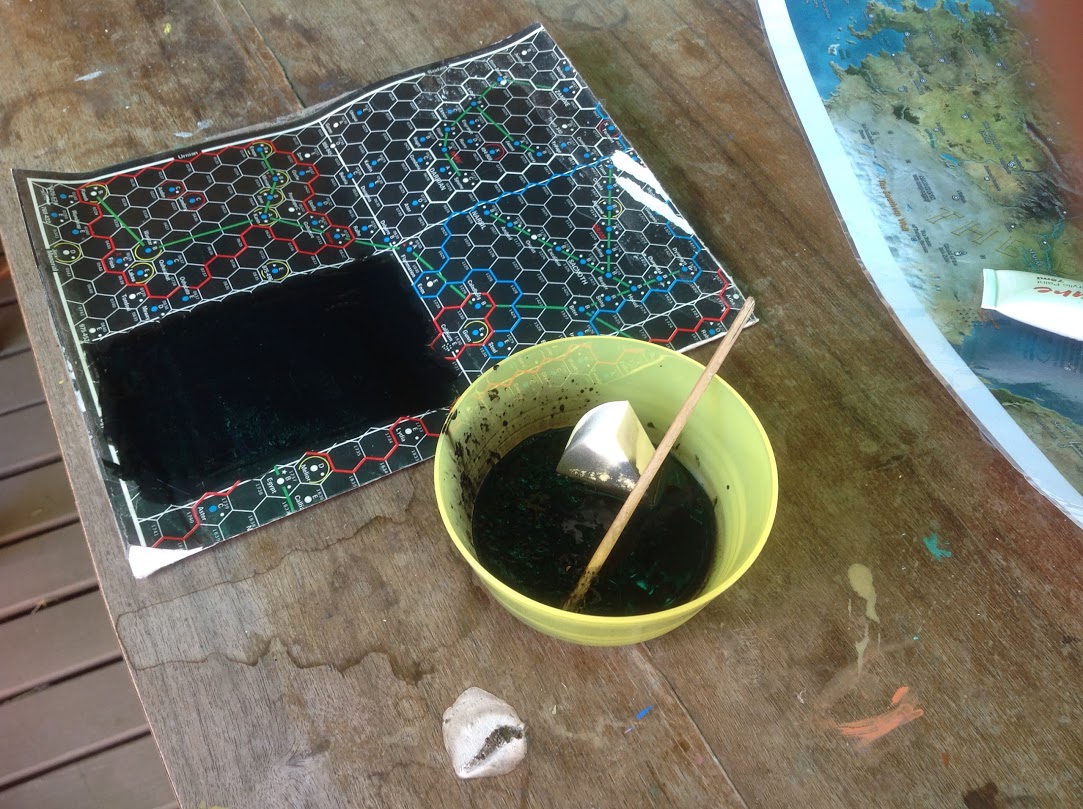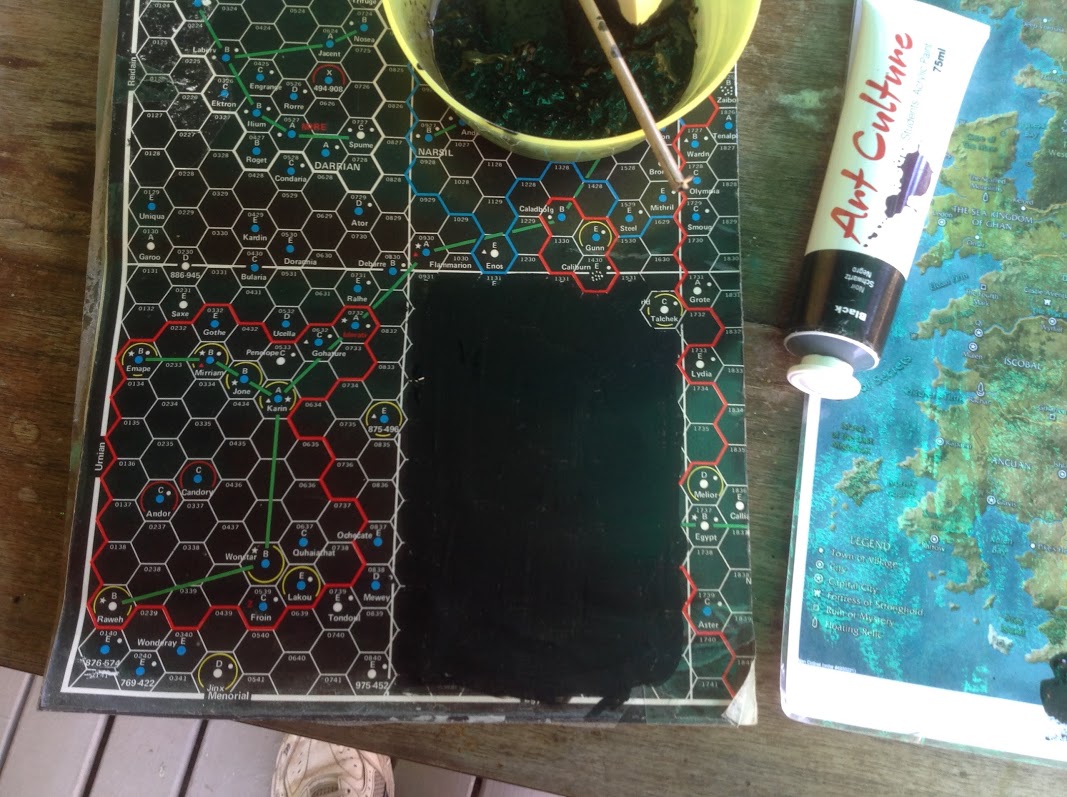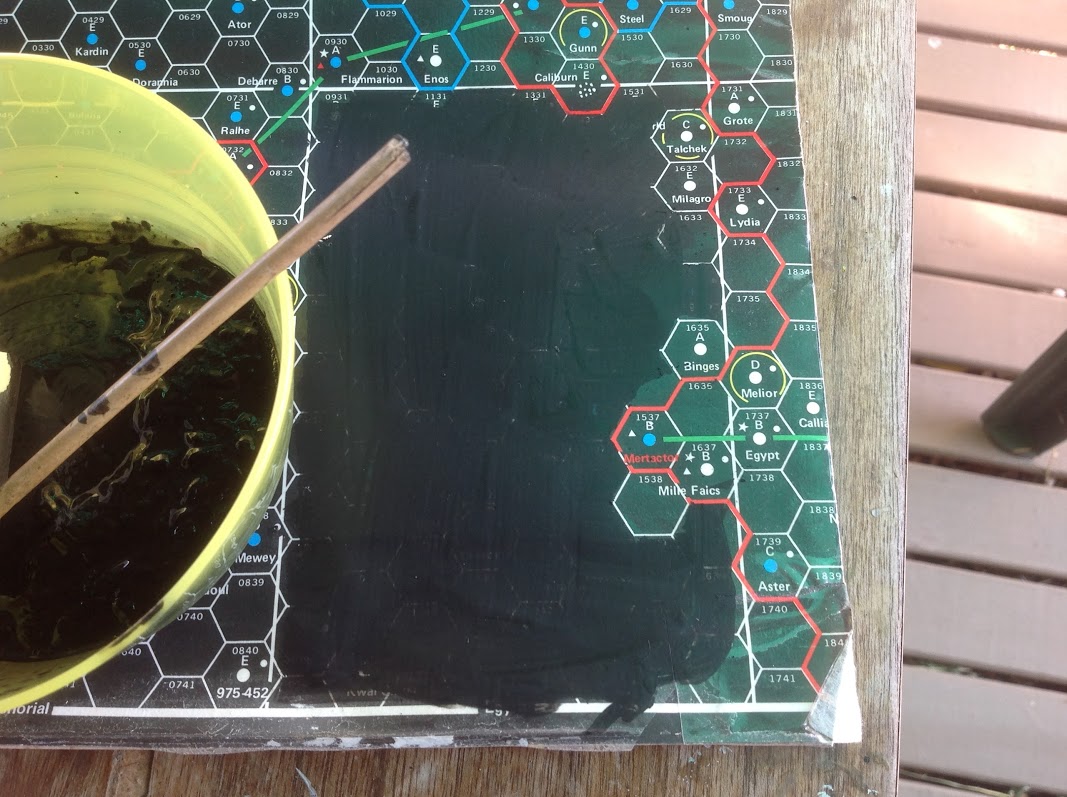Scratchable Game Maps
This article originally appeared in the June 2015 issue.
There’s something satisfying about a printed physical map, but how does the GM keep some map details secret while revealing others? Even in the far future, high technology can take an occasional rest.
This recipe is for a simple, low-tech alternative to graphical mapping packages. This simple formula for scratch-off paint allows the GM to reveal portions of the map during the game as they become available to the PCs.
Required Materials
- Plastic-covered map (either laminated or covered in contact plastic)
- Paint mixing bowl or cup
- Liquid soap (such as dishwashing detergent or hand wash soap)
- Cheap acrylic paint of the desired colour (colour selection hints below)
- Small quantity of tap water
- Broad paintbrush for paint mixing and application
- Coin (or reverse end of brush) for scratching paint

Procedure
Prepare the work surface first by covering with newspaper. Ensure all materials are to hand.
Mix the liquid soap and acrylic paint in a 1:2 mix. Mix gently to avoid generating soap bubbles. The soap ensures that the paint will not bind to the plastic surface. A little tap water will improve paint mixing and flow.
Cover the plastic map surface with a single thin coat of the paint mix. Use a broad paintbrush with long, even strokes.
Allow the map to dry. Depending on temperature, humidity and air flow, this may be as little as 5 minutes or up to 20 minutes. Longer probably means that the paint is too thick.
Tidy up, using a coin to scratch areas intended as visible to players from the beginning. In the example shown, Imperial worlds are known to the PCs, with jump tapes available at a once-only expense for a minimum-risk jump. Jump calculations are free but time-consuming, and must be performed for every jump, with greater risk of a mishap.

Hints and Tips
Black paint gives the best coverage, because it has the highest pigment density. Other colours may need several coats. Red, for example, looks great but light “shines through” a single layer; with yellow paint, this problem is even more pronounced. Please note however that any colour is possible, so long as each coat is allowed to dry before another is applied.
A cheap cosmetic sponge (available in discount stores and supermarkets) spreads paint more evenly. The illustrated example was coated in this way.
I recommend you experiment with other techniques to find your own solution. For example, stippling (using the brush or sponge in a dabbing motion) gives a dappled pattern of paint which dries more rapidly, but still obscures features like writing without requiring perfect coverage.
Consider using this technique for terrain maps, tactical maps such as deckplans and building blueprints, or even for concealing NPC details. It would also be possible to create solo adventures, where the player reveals details as the game progresses. Explore and have fun!

 Freelance
Traveller
Freelance
Traveller